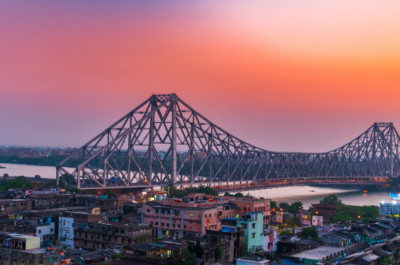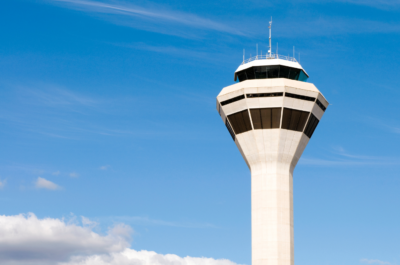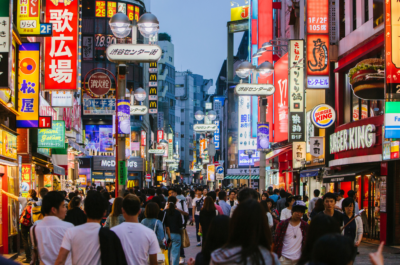…
The year 2004 proved beyond doubt that the future of this fragile industry depends not only on factors such as airlines (in all their guises), the growth of Internet bookings, clever marketing campaigns or sustainable
destination development, but also on our ability to react to wider `external shocks` supposedly beyond the industry`s control.
2003 was one of the worst years ever for travel and tourism, largely due to four factors – the conflict in Iraq, SARS, terrorism and global economic doldrums. In the absence of any such debacles this year, it was almost
natural that people would take to the road again and that 2004 would prove to be a bounce-back year.
Indeed, 2004 may prove to be much better than simply a bounce-back year.
PATA`s Strategic Intelligence Centre (SIC) is forecasting that, in the absence of any major international crises in December 2004, total visitor movements in the Asia Pacific region will total a record 300+ million, about 10% more than the previous record of 274.8 million in 2002.
Here in summary are SIC`s estimates of international visitor arrivals (IVAs) to Asia Pacific destinations for 2004.
Chart 1: IVAs to Asia Pacific destinations 2000-2003 actual and 2004 estimated (in millions)
It appears likely that the aggregate total of IVAs to the Asia Pacific region in calendar year 2004 will, for the first time ever, break the 300 million mark – and will do so with vigour. While the strength of this growth varies from sub-region to sub-region, it is still evident that in the majority of cases we have progressed beyond the `bounce-back` stage and have returned to strong growth.
TO AND WITHIN ASIA PACIFIC
Here are the figures across the region:
The Americas
The aggregate picture year-to-date for the Americas (Canada, Chile, Mexico and the USA), stands at 57.6 million IVAs with some 15 month`s data across the four destinations still to be added.
Table 1: Year-to-date IVAs to Destinations in the Americas
| Destination | Period |
2003
|
2004
|
% Change
|
| Canada (Total) | Jan-Sep |
14,224,826
|
15,669,192
|
10.2
|
| Chile | Jan-Jul |
898,437
|
1,050,864
|
17.0
|
| Mexico | Jan-Sep |
13,624,990
|
15,047,120
|
10.4
|
| USA (Total) | Jan-Aug |
22,828,131
|
25,863,225
|
13.3
|
| Sub-total |
51,576,384
|
57,630,401
|
11.7
|
If normal seasonal patterns continue, we expect the full-year result for the Americas to reach somewhere around 80.0 million IVAs for the year. While this will be a substantial improvement over the 2003 result of 72.2 million (+10.7%), there is still some way to go before the year 2000 high of 86.7 million is exceeded.
South Asia
Data for South Asia is somewhat limited. Only India, the Maldives, Nepal (by air only) and Sri Lanka have supplied 2004 data so far. Nevertheless these four destinations accounted for more than 85% of IVAs to South Asia in 2003. They therefore reasonably reflect the trend in South Asia as a whole.
The situation at the time of writing was as follows:
Table 2: Year-to-date IVAs to South Asia Destinations
| Destination | Period |
2003
|
2004
|
% Change
|
| India | Jan-Oct |
2,116,360
|
2,618,818
|
23.7
|
| Maldives | Jan-Oct |
454,241
|
515,555
|
13.5
|
| Nepal (air only) | Jan-Oct |
210,594
|
242,019
|
14.9
|
| Sri Lanka | Jan-Oct |
387,974
|
435,072
|
12.1
|
| Sub-total |
3,169,169
|
3,811,464
|
20.3
|
Given this performance year-to-date and assuming no change in the volume of arrivals (700,000) to angladesh, Bhutan and Pakistan over 2003, SIC expects South Asia IVAs to reach an aggregate figure of around 5.5 million by the end of 2004. That would be a record year for South Asia!
Chart 2: IVAs to South Asia 2000-2003 actual and 2004 estimated (in millions)
Northeast Asia
The six Northeast Asian destinations for which data are available for 2004 show a year-to-date position as follows:
Table 3: Year-to-date IVAs to Northeast Asia Destinations
| Destination | Period |
2003
|
2004
|
% Change
|
| China (PRC) | Jan-Sep |
66,012,027
|
79,908,042
|
21.1
|
| Chinese Taipei | Jan-Oct |
1,761,086
|
2,403,109
|
36.5
|
| Hong Kong SAR(Total) | Jan-Oct |
12,058,697
|
17,773,512
|
47.4
|
| Japan | Jan-Aug |
3,363,449
|
4,175,185
|
24.1
|
| Korea (ROK) | Jan-Oct |
3,823,436
|
4,786,811
|
25.2
|
| Macau SAR | Jan-Sep |
8,389,907
|
12,190,113
|
45.3
|
| Sub-total |
95,408,602
|
121,236,772
|
27.1
|
It should be noted that these figures include the substantial flows between China (PRC), Hong Kong SAR and Macau SAR, which are changing the face of traffic flows in Northeast Asia.
It has been a remarkable period for these destinations given the devastating effects of the various events of 2003, especially SARS . In terms of percentage growth, Northeast Asia has seen a year-to-date increase of more than 27%. And this is off a huge volume base.
Collectively these destinations have so far chalked up in excess of 121 million IVAs, which as yet does not include the `Golden Week` of October in the tally. Based on these results our estimates suggest a final count at year`s end of around 160 million for international traffic to Northeast Asia. Another record!
Chart 3: IVAs to Northeast Asia 2000-2003 actual and 2004 estimated (in millions)
Southeast Asia
Nearly all destinations within this sub-region, as defined by PATA, have supplied arrivals data for 2004 , and the current year-to-date situation is exceptionally positive.
Table 4: Year-to-date IVAs to Southeast Asia Destinations
| Destination | Period |
2003
|
2004
|
% Change
|
| Cambodia | Jan-Oct |
524,386
|
757,258
|
44.4
|
| Indonesia | Jan-Jun |
1,940,286
|
2,512,709
|
29.5
|
| Lao (PDR) | Jan-Aug |
421,151
|
562,374
|
33.5
|
| Malaysia | Jan-Sep |
7,117,624
|
11,711,440
|
64.5
|
| Myanmar (Air) | Jan-Aug |
124,349
|
150,598
|
21.1
|
| Philippines | Jan-Oct |
1,497,989
|
1,861,497
|
24.3
|
| Singapore | Jan-Sep |
4,213,053
|
6,072,866
|
44.1
|
| Thailand | Jan-Jul |
5,175,118
|
6,571,733
|
27.0
|
| Vietnam | Jan-Oct |
1,630,800
|
2,146,517
|
31.6
|
| Sub-total |
22,644,756
|
32,346,992
|
42.8
|
Singapore, which was hard hit by SARS fears last year, has recovered strongly, while Malaysia continues to dominate the field with exceptional percentage growth off a relatively large numeric base. SIC`s estimates for 2004 suggest a banner year with around 50 million IVAs expected.
Chart 4: IVAs to Southeast Asia 2000-2003 actual and 2004 estimated (in millions)
The Pacific
The sixteen destinations that have supplied year-to-date data for 2004 show a combined picture of almost 16% growth over calendar year 2003 with Palau and Guam leading the pack in percentage gain terms.
Australia and New Zealand dominate in numeric terms capturing more than 70% of the volume to the Pacific, and with their solid percentage gains on relatively large volumes it is not surprising to see such a strong regional performance.
Table 5: Year-to-date IVAs to Destinations in the Pacific
| Destination | Period |
2003
|
2004
|
% Change
|
| Australia | Jan-Sep |
3,270,641
|
3,692,149
|
12.9
|
| New Zealand | Jan-Oct |
1,597,214
|
1,814,005
|
13.6
|
| Cook Islands | Jan-Sep |
57,465
|
60,248
|
4.8
|
| Fiji | Jan-Aug |
274,736
|
326
|
18.7
|
| Guam | Jan-Oct |
718,083
|
965,146
|
34.4
|
| Kiribati | Jan-Jun |
1,696
|
1,707
|
0.6
|
| Micronesia | Jan-Mar |
5,687
|
5,576
|
-2.0
|
| New Caledonia | Jan-Sep |
72,737
|
70,176
|
-3.5
|
| Northern Marianas | Jan-Aug |
291,269
|
357,119
|
22.6
|
| Palau | Jan-Sep |
45,967
|
67,79
|
47.5
|
| Papua New Guinea | Jan-Sep |
40,879
|
45,465
|
11.2
|
| Samoa | Jan-Aug |
59,307
|
62,252
|
5.0
|
| Tahiti | Jan-Aug |
136,449
|
139,092
|
1.9
|
| Tonga(Air) | Jan-Oct |
30,992
|
32,016
|
3.3
|
| Tuvalu | Jan-Jun |
655
|
711
|
8.5
|
| Vanuatu | Jan-Mar |
10,49
|
11,543
|
10
|
| Sub-total |
6,614,267
|
7,650,995
|
15.7
|
SIC expects these general growth patterns to continue to the end of the year with an anticipated final aggregate figure of close to 11 million IVAs for the Pacific. PATA has traditionally included Hawaii in the count for the Pacific. If current indicators (+8.7% as at September) are any pointer we can expect to add more than 6 million additional IVAs to Hawaii to the Pacific`s total.
Chart 5: IVAs to the Pacific 2000-2003 actual and 2004 estimated (in millions)
THE WORLD AROUND US
So much for the Asia Pacific region; so what of the rest of the world and of the near future?
In late October 2004, a diverse group of industry watchers and forecasters met for what has become an annual event in Pisa, Italy, to look back at the year past and offer some insights into the future. The following is a wrap-up of some of those discussions:
The Changing Face of Governments
The past year has seen national elections in a number of PATA countries, including the world`s three largest democracies, India, Indonesia and the United States, plus Australia, Canada, Malaysia and the Philippines.
Elections also took place in some European and Latin American countries.
Each election produced results that offered some interesting insights into the mood of the people of the PATA region, reflecting concerns over local economic conditions as much as international relations, religious fundamentalism and democracy.
Strategic planners and students of travel and tourism may find it useful to assess the policy platforms of the new governments to closely examine how their macro perspectives on global, regional and national issues will eventually impact on micro policies like travel and tourism.
Global Insight, a firm that analyses economic and travel trends, shared the following thoughts at the Pisa think-tank meeting regarding various regions of the world:
The United States
- Economic growth is likely to be more diversified (thanks to strongerexports, capital spending and inventories) and, therefore, more sustainable
- The jobs picture is improving, albeit slowly
- Inflation will move up gradually
- The Federal Government will raise interest rates at a measured pace
- Strong possibility that taxes will rise in 2005
- The US$ will continue to slide
- US domestic demand growth will slow next year
- Business fixed investment will begin to recover.
Europe
- A rising euro, uncompetitive labour market and cautious policies are restraining growth; unemployment will remain near 9%
- After cutting taxes in 2004, several countries will be under pressure to tighten fiscal policies and reduce budget deficits
- The European Central Bank is expected to keep its interest rate at 2% through to mid-2005 before gradually lifting it
- An aging population, inflexible labour markets, costly pension systems and aversion to immigration will limit long-term economic growth to 2-2.5%
- Enlargement of the European Union will divert investment to accession countries and could become an impetus to reform
Japan
- Japan is growing again, although there are some doubts about the strength of the recovery
- While exports have led the way, domestic demand is also picking up
- China (PRC)`s economic boom is helping Japan
- Deflation is still a problem (though diminishing)
- Slow progress will be made in cleaning up Japanese banks and implementing structural reforms
Asia
- One of the few regions where domestic demand growth is strong(especially in China (PRC)) – making it a mini growth locomotive
- Led by China (PRC), the region has provided a huge boost to commodity exporters worldwide
- India is also on an economic take off – the recent change in government will continue the reform process
- One of the few regions where inflation is rising
- High savings rates mean that Asian economies will continue to be capital exporters
- However, rising domestic debt is a source of concern
Other Emerging Regions
- The rebound in world trade growth and much stronger commodities prices (thanks to China (PRC)) have boosted growth in all emerging regions
- Higher oil prices are hurting some countries
- Lower risk premiums are helping to attract capital back into many emerging markets
- Countries with currencies linked to the US$ have benefited from the greenback`s slide over the past two years
Sources of vulnerability
- Export-led growth everywhere but the US – does this mean that a US$ crash is inevitable?
- Will central banks tighten too aggressively?
- A spike in US interest rates (a repeat of 1994)
- Rising debt levels
Oil Prices Reflect a Tight, Uncertain Market
- Strong demand from the US and China (PRC) is supporting oil prices
- World oil demand is projected to increase 3.3% this year and 2.4% in 2005
- OPEC has little spare capacity and expansion will take time; Saudi Arabia`s production increases will help
- Non-OPEC production is rising, led by new supplies from Russia
- Political instability and potential supply problems in Iraq, Russia, Venezuela, and Nigeria pose upside price risks
TRENDS IN THE TRAVEL INDUSTRY
At the 2004 World Travel Market in London, November 10, the University of Surrey, School of Management and the Greek National Tourism Organisation organised a discussion forum on the Future of Tourism. The objective was to identify key challenges and opportunities for both tourism destinations and suppliers in order to rethink both strategic and tactical tourism management.
Organised by Dr Dimitrios Buhalis and chaired by Prof David Airey, the forum identified these key issues:
- Technology is changing the structure of the industry providing opportunities and challenges
- Dynamic packaging is emerging as part of mainstream tourism distribution
- There is an oversupply of undifferentiated travel products, increasing competition and reducing prices
- Environmental concern is coming to the front line of tourismcompetitiveness
- The greening of the industry is a result of both customer demand and legislation
- Industry and all stakeholders need to assume responsibility forsustainability
- local industries and tour operators need to work together to enhance destinations
- human resources and education will be critical for the level of service offered in the industry
- Although the quantity of tourism graduates has been addressed, the quality of the curriculum needs to be revisited to ensure that sufficient skills are available
- Major new markets are emerging and providing new opportunities, in particular those of India and China (PRC)
- Safety and security has influenced tourism demand in the last few years
- There is a significant demographics shift with an ageing but more active population
- Governments and politicians need to create an infrastructure for business
- Tourism requires a professional approach to planning and marketing away from political interests and short-term gains o the power of tourism is shifting back to customers
OPPORTUNITIES IN OUTBOUND
India
Disposable income is expected to go up from US$468 per capita consumption in 2000 to US$17,000 by 2050. India`s 300-million-strong middle class – larger than the entire population of the US – is estimated to spend an additional US$420 billion over the next four years and will increasingly travel.
Kuoni India estimates that in the very near future 25 million Indians will be able to afford overseas travel. As the Indian industry gets richer, more ambitious and more professional, it is expected to look outwards at global markets, meaning more travel for business, conferences, exhibitions and incentives.
For many Indians today, a foreign holiday is a status symbol. Outbound travel has more than doubled between 1992 and 2002. Travel to North and South America, Europe, the Middle East, Southeast Asia, East Asia and Australia has also more than doubled in the last decade. Destinations such as Hong Kong SAR, Thailand, Malaysia, Sri Lanka, Maldives and Nepal are relaxing visa formalities for Indian travellers.
China (PRC)
China (PRC)`s outbound travel has been nothing less than `breath-taking`, according to IPK International, rising from 5.1 million in 2000 to a projected 19 million in 2004. Total outbound border crossings, however, are expected to reach around 30 million by year`s end. Of the 2004 figure, holidays are projected to comprise 60% of the total, business 25% and other leisure 15%. In terms of destinations, Asia is getting 82% of Chinese outbound trips, Europe 14%, and America 1%, with the rest going to Africa, Australia and Oceania.
In terms of spending per trip, the Chinese recorded EUR1,900 (US$2,500) per trip in 2003, second only to the Japanese with EUR2,100 (US$2,700) per trip, and well above the Americans (EUR1,400) and the Europeans (EUR900). There is talk of 100 million outbound Chinese travellers by 2020.
Europe
According to IPK International, the following scenarios have shaped outbound travel from Europe in 2004.
- The strong EUR vs. US$ is a major factor in driving European travel to the US o Weather conditions have returned to normal, compared to the Super Summer of 2003 o After SARS, travel to Asia recovered rapidly, especially to China (PRC)
- The total number of holidays is up by +10%, while business travel is up +1%
- The choice of destinations grew, as did price consciousness. The Caribbean, Mediterranean, North African destinations as well as the new members of the European Union competed intensively for European visitors
- Demand for low-fare specials boomed, thanks to low-cost airlines, which have grown phenomenally and today have more than 25% market share o Internet usage is growing. For the first time, bookings via the trade fell to 49% of the total, while bookings via non-trade sources rose to 51%. Actual online booking was up +39% and online looking +1%
- The number of short trips was up 24% while long trips of more than four nights were up only 1%
- The demographic revolution is ongoing
United States
The US market is being closely watched. According to Global Insight, in 2003 total outbound was 60.4 million trips, of which overseas trips comprised 28.6 million. In 2004, total outbound is projected to be up 7.9%, with overseas outbound up by 6.6%. However, total outbound will still be 4.2% below the 2000 peak and overseas outbound 9% off the high.
According to the consultancy company D.K.Shifflet & Associates, travel to the Caribbean and Mexico was up in 2004. Cruises were up from 9% to 11% but business travel recovery remains slow. Two predominant factors driving travel trends are the weaker dollar and safety and security concerns. An emerging factor is what is being described as shifting mind-sets, the legacy of 9/11 – a reflection of the psychological attitude of travellers pertaining to the perception of safety and security.
According to D.K.Shifflet & Associates, a new normal is emerging in US travel, as the economy and fear keep travellers closer to home. Today, the perceived safety of a destination does not garner travel, it merely
implies consideration.
INBOUND US
After a long lull, the United States is about to re-start its international marketing campaigns to attract more inbound tourists.
According to Ron Erdmann of the Office of Travel & Tourism Industries, the US Congress has appropriated funds for the first-ever international tourism marketing campaign, with the United Kingdom to be the first country targeted. The UK campaign will be used as a pilot template for future campaigns in other markets.
The UK is the biggest overseas market for the US, with more than 4 million visitors annually. They are also big spenders (US$8.7 billion in 2003, US$1 billion more than others) and resilient in their travel plans.
Qualitative strategic and creative research is to be conducted with focus groups in the UK. An initial benchmark study will cover 500+ UK consumers and a post-campaign benchmark study will cover 1,200+ UK consumers.
TV advertising is to be launched in late December 2004 or early January 2005. The idea is to create a buzz that will generate millions of hits to the Web site SeeAmerica.org.uk and generate bottom-line business for the UK-based travel trade.
CHANGE IS IN AIR
The air transport industry is the lifeline of travel and tourism. While airlines may appear to be losing money globally due to high oil prices, Asia Pacific airlines are generally weathering the storm.Low-cost airlines seem to be growing the market, rather than stealing market share from the majors. The PATA region`s robust economies and large population bases guarantee a steady flow of passengers for all kinds of products. The size of the cake continues to grow. According to the consultancy company Airclaims, aviation remains an efficient public transport business that has enjoyed a volume growth of 6% per year over the last 30 years, serving 1.6 billion passengers in 2003.
It enjoys high levels of customer satisfaction due to lower fares and higher service.
On the other hand, despite a growing trend towards deregulation, there is a strong national regulatory interest in bilateral traffic rights. The industry also remains subject to numerous external shocks, such as GDP, fuel prices, taxes, security and war. And infrastructure constraints remain.
Fundamental changes are taking place, however, thanks to growing aircraft seat capacity, slow but steady liberalisation and the emergence of new business models as many airlines seek to `unbundle` their various units into profit-making entities in their own right. In addition, the International Air Transport Association launched its Simplifying Air Travel initiative in November 2004, prompted by the thought that the industry is weighed down by its own complexity, from `manpower rules` to ticket distribution. PATA-region airlines are expected to remain in good shape in 2005, though some of the smaller low-cost airlines may face turbulence if they come under too much competitive pressure.
PREPARE TO IMAGINE
With the US elections now over, 2005 promises to be an interesting year. Like other businesses, travel and tourism needs a stable operating environment in which to execute strategies. The industry`s biggest nemesis is `external shocks`. We can`t predict what `external shocks`, if any, 2005 will throw at us; we can only imagine.
TravelDailyNews Asia-Pacific editorial team has an experience of over 35 years in B2B travel journalism as well as in tourism & hospitality marketing and communications.











































































